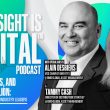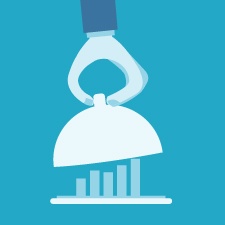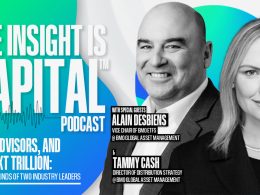by The Algonquin Team, Algonquin Capital
He uses statistics as a drunken man uses lamp-posts – for support rather than illumination.
Andrew Lang
Data is like coffee shops. These days it is everywhere and in abundance. It doesn’t matter whether you are building a hockey team, managing investments, or picking the fastest route home, there are a lot of numbers being crunched. We could be living through the first period in history where statisticians are cool.
New technology has afforded us the ability to access and process vast amounts of data. In theory, this should enable us to make more informed and rational choices instead of relying on ‘gut feel.’ But until algorithms are making all our decisions and driving our cars, we humans have to sort through and interpret this overwhelming flow of information.
The first challenge is selecting and determining what measurements are relevant. This can be especially tricky when confronted with divergent or contradictory evidence and is further compounded by our tendency to concentrate on material that confirms our pre-existing beliefs. Ultimately, what we choose to focus on and ignore will shape the views we form.
Once the data has been selected, it must then be analyzed. When interpreting the facts, we must be wary of any disconnect between what the numbers say and what people feel to be true. In such cases, evidence-based conclusions may not jive with the behaviour of consumers, voters, and market participants. As seasoned investors know, despite what the numbers indicate, markets can go from irrational to very irrational and stay there for a long time.
There is also the question of the quality of the data and the methods being used to analyze it. This is not just a shot at fake news, but an important consideration for scientific research. This why academics often review the findings of their peers, sometimes with surprising results. After all, as statistics show, 80% of statistics are made up.
Even when the data is good, we run the risk of confusing correlation and causation. A fun illustration of this was presented over two decades ago by David Leinweber and Dave Krider. They found a 75% correlation between butter production in Bangladesh and the S&P500. Adding US cheese production improved this to 95% and introducing a third variable; sheep population, resulted in a regression that explained 99% of the US stock market. As nonsensical as this seems, they apparently still get phone calls from people wondering what the butter indicator is saying.
Finally, there is the illusion of precision that can come from cold hard facts and numbers. There is a certain amount of confidence that is inspired by the exactness of 4.523. This can lead us to be precisely wrong rather than approximately right. With all the tools available to us, it is easy to overemphasize what we can measure and ignore what we can’t.
We have no doubt that making decisions based on hard evidence helps us avoid hidden biases, popular misconceptions, and wishful thinking. But a plethora of information also makes the decision-making process extremely complicated. Perhaps the greatest irony of the preponderance of data is that good judgment matters even more.
Copyright © Algonquin Capital















